-
 Bitcoin
Bitcoin $85,030.4836
-2.32% -
 Ethereum
Ethereum $1,892.7782
-6.48% -
 Tether USDt
Tether USDt $0.9998
-0.04% -
 XRP
XRP $2.2092
-6.44% -
 BNB
BNB $629.9283
-0.83% -
 Solana
Solana $131.3208
-4.92% -
 USDC
USDC $1.0001
0.00% -
 Dogecoin
Dogecoin $0.1805
-7.24% -
 Cardano
Cardano $0.7004
-4.89% -
 TRON
TRON $0.2301
-1.53% -
 Toncoin
Toncoin $4.0042
2.79% -
 Chainlink
Chainlink $14.3083
-8.37% -
 UNUS SED LEO
UNUS SED LEO $9.8192
0.46% -
 Stellar
Stellar $0.2750
-4.97% -
 Avalanche
Avalanche $20.3109
-7.69% -
 Sui
Sui $2.5389
-7.25% -
 Shiba Inu
Shiba Inu $0.0...01322
-8.06% -
 Hedera
Hedera $0.1832
-4.09% -
 Polkadot
Polkadot $4.2847
-7.21% -
 Litecoin
Litecoin $87.9904
-6.58% -
 MANTRA
MANTRA $6.4000
-2.94% -
 Bitcoin Cash
Bitcoin Cash $311.8559
-6.22% -
 Bitget Token
Bitget Token $4.7469
-5.40% -
 Pi
Pi $0.8238
-2.41% -
 Dai
Dai $0.9999
-0.01% -
 Ethena USDe
Ethena USDe $0.9990
-0.02% -
 Hyperliquid
Hyperliquid $13.7352
-5.04% -
 Monero
Monero $220.9200
-1.04% -
 Uniswap
Uniswap $6.3190
-6.48% -
 NEAR Protocol
NEAR Protocol $2.7879
-6.94%
How does liquidity pools in DeFi mining work?
DeFi liquidity pools, crucial for DEX operation, reward users with trading fees for providing paired tokens. However, impermanent loss—where holding assets individually yields higher returns—is a key risk, mitigated by strategies like selecting low-volatility pairs and understanding market trends.
Mar 23, 2025 at 02:08 pm
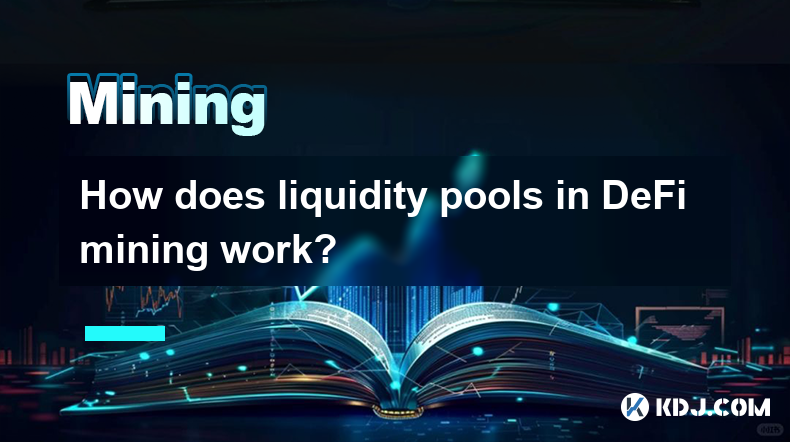
Key Points:
- Liquidity pools are the foundation of many DeFi protocols, providing the necessary funds for decentralized exchanges (DEXs) to operate.
- Providing liquidity to a pool involves depositing pairs of tokens, earning trading fees as a reward.
- Impermanent loss is a significant risk, where holding tokens individually would have yielded higher returns than providing liquidity.
- Various strategies exist to mitigate impermanent loss, including selecting low-volatility token pairs and understanding market trends.
- Yield farming involves leveraging deposited liquidity in various DeFi protocols for enhanced returns, often involving multiple pools.
How Does Liquidity Pools in DeFi Mining Work?
Decentralized Finance (DeFi) has revolutionized traditional finance by leveraging blockchain technology to create trustless and transparent financial systems. A core component of this revolution is the liquidity pool, a crucial element in DeFi mining and yield farming strategies. These pools are essentially collections of cryptocurrencies locked in a smart contract, providing the necessary funds for decentralized exchanges (DEXs) to operate. Without liquidity pools, DEXs would struggle to facilitate trades.
The mechanism is straightforward. Users deposit pairs of tokens – for instance, ETH and USDC – into a smart contract. This creates liquidity for traders on the DEX to swap between these tokens. In return for providing this liquidity, users earn a share of the trading fees generated by these swaps. The share received is proportional to the amount of liquidity provided. The more tokens deposited, the larger the share of trading fees earned.
However, there's a significant risk associated with providing liquidity: impermanent loss. This occurs when the relative price of the deposited tokens changes after they are added to the pool. If one token's price appreciates significantly compared to the other, you would have earned more by simply holding the assets individually.
For example, imagine you deposit 1 ETH and 1000 USDC when ETH is priced at $1000. If ETH's price doubles to $2000, while USDC remains stable, you'd have made more profit by simply holding your ETH and USDC separately. Impermanent loss represents the difference between your profits from providing liquidity versus holding your assets. This loss is only "impermanent" until you withdraw your assets from the pool. If the prices revert to their original ratio before withdrawal, the loss disappears.
Several strategies can help mitigate impermanent loss. One approach is to choose low-volatility token pairs. Stablecoins paired with a relatively stable asset, such as a blue-chip cryptocurrency, minimizes price fluctuations and therefore the risk of impermanent loss. Another strategy is to carefully analyze market trends and understand the potential price movements of the tokens you're considering.
Yield farming takes liquidity provision a step further. It involves strategically moving your liquidity between various DeFi protocols to maximize returns. This often involves using borrowed funds or leveraging your existing liquidity across multiple pools, potentially compounding your earnings. However, this comes with increased risk, as leveraged positions amplify both profits and losses.
Understanding the concept of impermanent loss is crucial before participating in liquidity pools. Many platforms offer calculators to estimate potential impermanent loss based on different price scenarios. It's important to thoroughly research and understand the risks before committing funds to a liquidity pool. Remember, while the potential for high returns exists, it’s crucial to carefully weigh the associated risks.
Yield Farming Strategies:
Yield farming involves utilizing liquidity provision to generate higher returns. This often entails moving funds between different liquidity pools to capitalize on higher yields.
- Staking: Staking involves locking your tokens to support the network's security and earn rewards. Many DeFi protocols offer staking rewards alongside liquidity provision.
- Compounding: Regularly reinvesting earned rewards to increase your principal amount and accelerate earnings.
- Diversification: Spreading your liquidity across multiple pools and protocols to mitigate risk.
- Risk Management: Closely monitoring market conditions and adjusting your strategy accordingly.
Common Questions:
Q: What are the risks associated with liquidity pool participation?
A: The primary risk is impermanent loss, where holding assets individually would have been more profitable. Additionally, smart contract vulnerabilities, rug pulls (where developers abscond with funds), and market volatility all pose significant risks.
Q: How do I choose a suitable liquidity pool?
A: Consider the token pair's volatility, the trading fees offered, the reputation of the DeFi protocol, and the overall security of the smart contract. Research and due diligence are crucial.
Q: What is the difference between liquidity mining and yield farming?
A: Liquidity mining typically focuses on providing liquidity to a single pool for earning trading fees. Yield farming is a broader term encompassing multiple strategies, including liquidity mining, to maximize returns across various DeFi protocols.
Q: How can I minimize impermanent loss?
A: Choose low-volatility token pairs, carefully analyze market trends, and consider the time horizon of your investment. Understanding your risk tolerance is also crucial.
Q: Are there any fees associated with liquidity pools?
A: Yes, there are typically gas fees for transactions on the blockchain, and some protocols may charge additional fees for using their services. Trading fees are earned by liquidity providers, not paid by them.
Disclaimer:info@kdj.com
The information provided is not trading advice. kdj.com does not assume any responsibility for any investments made based on the information provided in this article. Cryptocurrencies are highly volatile and it is highly recommended that you invest with caution after thorough research!
If you believe that the content used on this website infringes your copyright, please contact us immediately (info@kdj.com) and we will delete it promptly.
- Remittix Connects the Speed of Cryptocurrency to the Reach of Traditional Banking
- 2025-03-28 20:00:12
- The crypto market is heating up fast, and several top altcoins are catching serious momentum heading into Q2 2025
- 2025-03-28 20:00:12
- MEXC Announces Listing of Kinto (K) with Massive 12,800 K & 50,000 USDT Prize Pool
- 2025-03-28 19:55:12
- Markets Took a Hit as Trump Threatened Tougher Tariffs on Canada and the EU
- 2025-03-28 19:55:12
- Remittix (RMX) Price Surges 400% as the Cryptocurrency Market Buzzes With Excitement From Dogecoin and Solana
- 2025-03-28 19:50:12
- SUI, ENA, W Lead This Week's Major Token Unlocks
- 2025-03-28 19:50:12
Related knowledge
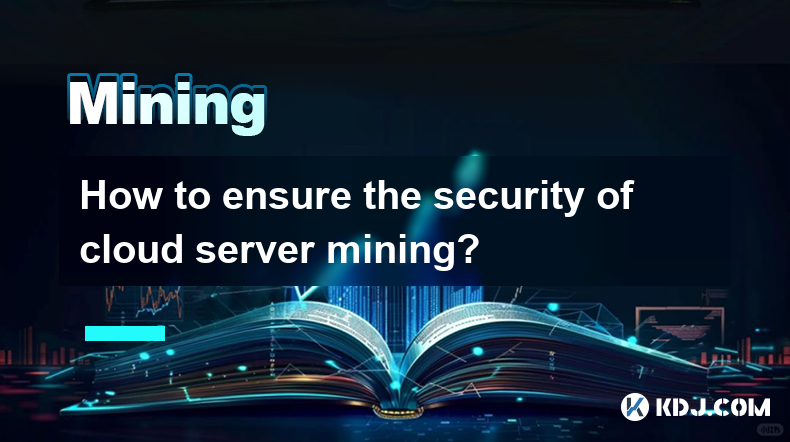
How to ensure the security of cloud server mining?
Mar 27,2025 at 06:08am
Cloud server mining offers accessibility and scalability, but it also introduces unique security risks. This article explores how to mitigate these risks and ensure the safety of your cryptocurrency mining operation. Understanding the VulnerabilitiesCloud server mining, while convenient, exposes your operation to various threats. These include unauthor...
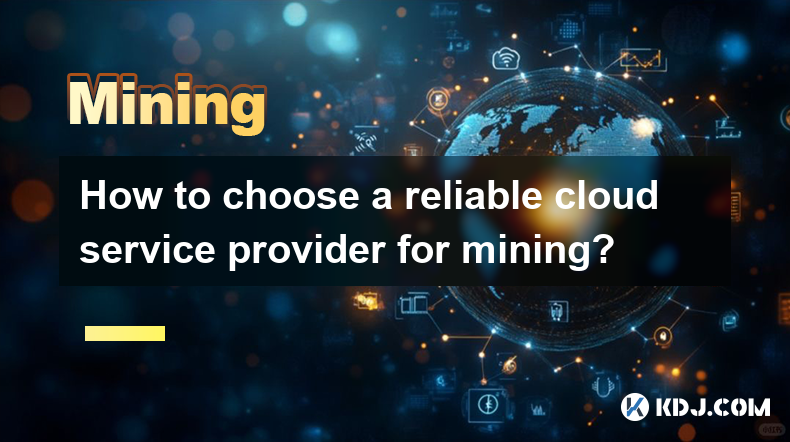
How to choose a reliable cloud service provider for mining?
Mar 28,2025 at 09:42am
How to Choose a Reliable Cloud Service Provider for Cryptocurrency Mining Cloud mining offers an accessible entry point to cryptocurrency mining without the need for expensive hardware or technical expertise. However, choosing a reliable provider is crucial to avoid scams and ensure profitability. This article explores the key factors to consider when s...
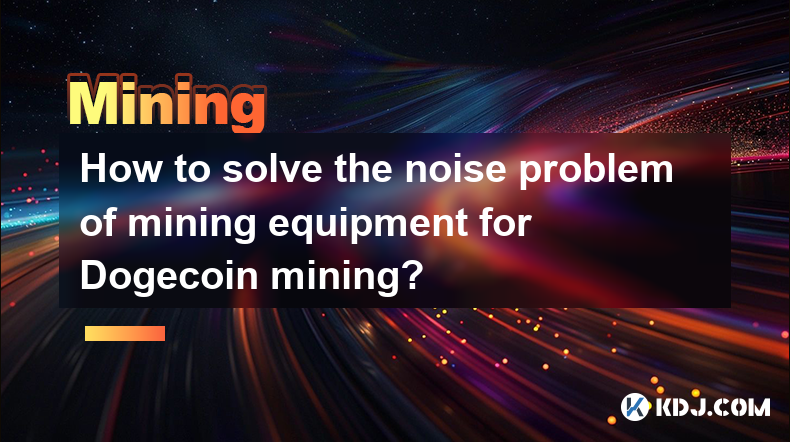
How to solve the noise problem of mining equipment for Dogecoin mining?
Mar 27,2025 at 12:00pm
Understanding the Noise Issue in Dogecoin MiningDogecoin mining, like other cryptocurrency mining, relies on powerful computers to solve complex mathematical problems. These computers, often assembled into specialized mining rigs, generate significant heat and, consequently, a considerable amount of noise. This noise can range from a bothersome hum to ...
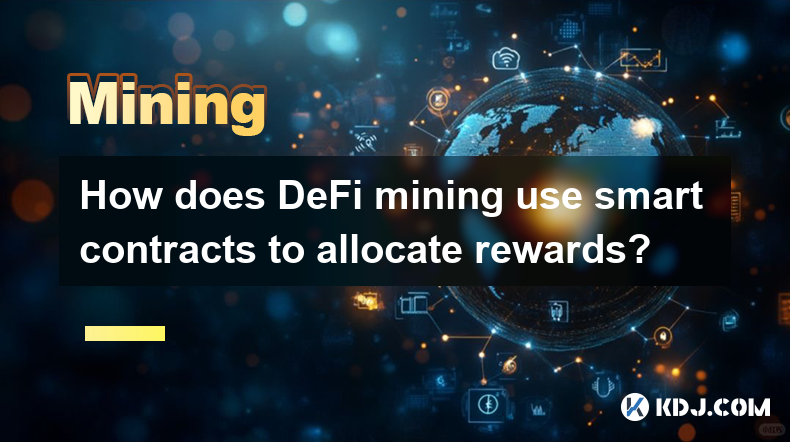
How does DeFi mining use smart contracts to allocate rewards?
Mar 28,2025 at 08:42am
The Role of Smart Contracts in DeFi Mining Reward AllocationDecentralized Finance (DeFi) mining, unlike traditional mining which relies on solving complex mathematical problems, leverages smart contracts to automate reward distribution. These self-executing contracts, written in code and residing on a blockchain, govern the entire process, ensuring tra...
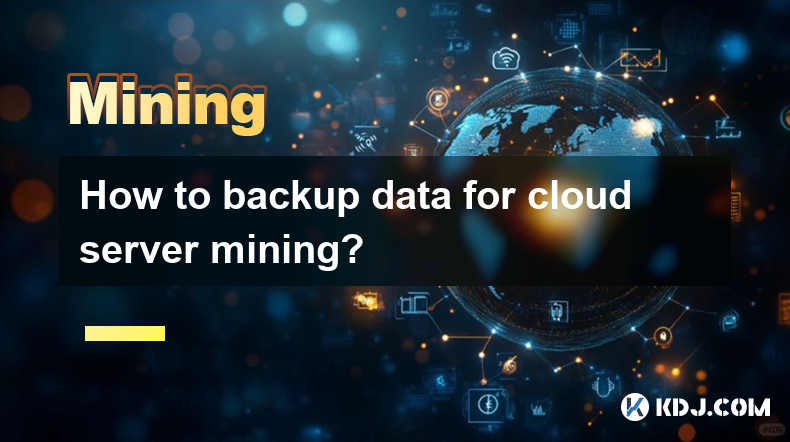
How to backup data for cloud server mining?
Mar 26,2025 at 10:29pm
Understanding the Risks of Data Loss in Cloud Server MiningCloud server mining, while offering scalability and convenience, presents unique data loss risks. These risks stem from various sources, including server failures, hacking attempts, provider outages, and even accidental deletions. Losing your mining configuration, wallet keys, or mining pool co...

How to calculate the income of CPU mining?
Mar 26,2025 at 10:07pm
Understanding CPU Mining ProfitabilityCPU mining, while less prevalent than GPU or ASIC mining, remains a viable option for certain cryptocurrencies, particularly those with algorithms designed for less powerful hardware. However, profitability is highly dependent on several factors. Calculating your potential income requires a careful assessment of th...

How to ensure the security of cloud server mining?
Mar 27,2025 at 06:08am
Cloud server mining offers accessibility and scalability, but it also introduces unique security risks. This article explores how to mitigate these risks and ensure the safety of your cryptocurrency mining operation. Understanding the VulnerabilitiesCloud server mining, while convenient, exposes your operation to various threats. These include unauthor...

How to choose a reliable cloud service provider for mining?
Mar 28,2025 at 09:42am
How to Choose a Reliable Cloud Service Provider for Cryptocurrency Mining Cloud mining offers an accessible entry point to cryptocurrency mining without the need for expensive hardware or technical expertise. However, choosing a reliable provider is crucial to avoid scams and ensure profitability. This article explores the key factors to consider when s...

How to solve the noise problem of mining equipment for Dogecoin mining?
Mar 27,2025 at 12:00pm
Understanding the Noise Issue in Dogecoin MiningDogecoin mining, like other cryptocurrency mining, relies on powerful computers to solve complex mathematical problems. These computers, often assembled into specialized mining rigs, generate significant heat and, consequently, a considerable amount of noise. This noise can range from a bothersome hum to ...

How does DeFi mining use smart contracts to allocate rewards?
Mar 28,2025 at 08:42am
The Role of Smart Contracts in DeFi Mining Reward AllocationDecentralized Finance (DeFi) mining, unlike traditional mining which relies on solving complex mathematical problems, leverages smart contracts to automate reward distribution. These self-executing contracts, written in code and residing on a blockchain, govern the entire process, ensuring tra...

How to backup data for cloud server mining?
Mar 26,2025 at 10:29pm
Understanding the Risks of Data Loss in Cloud Server MiningCloud server mining, while offering scalability and convenience, presents unique data loss risks. These risks stem from various sources, including server failures, hacking attempts, provider outages, and even accidental deletions. Losing your mining configuration, wallet keys, or mining pool co...

How to calculate the income of CPU mining?
Mar 26,2025 at 10:07pm
Understanding CPU Mining ProfitabilityCPU mining, while less prevalent than GPU or ASIC mining, remains a viable option for certain cryptocurrencies, particularly those with algorithms designed for less powerful hardware. However, profitability is highly dependent on several factors. Calculating your potential income requires a careful assessment of th...
See all articles

























![BONK COIN PRICE PREDICTION [ GETTING GASSED OUT !! ] BONK COIN PRICE PREDICTION [ GETTING GASSED OUT !! ]](/uploads/2025/03/28/cryptocurrencies-news/videos/bonk-coin-price-prediction-gassed/image-1.jpg)





























































